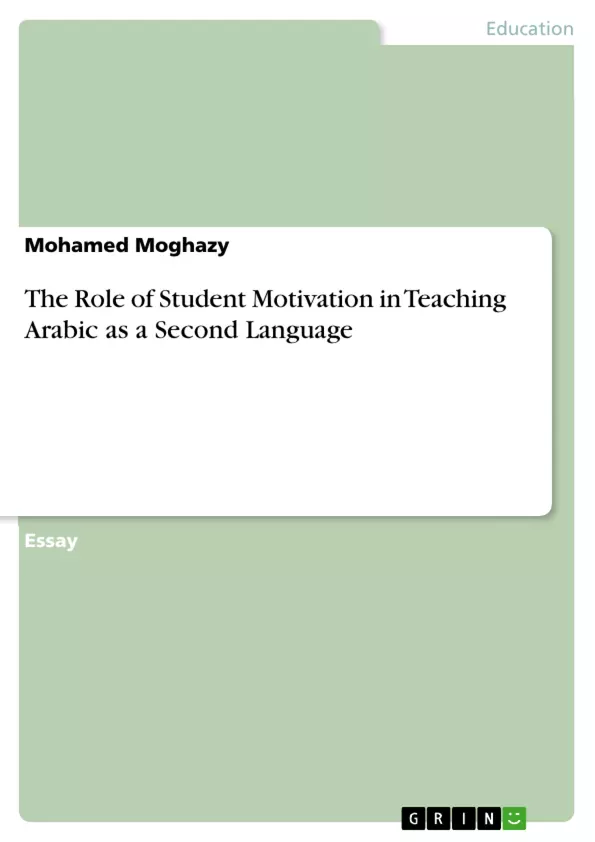Motivation plays a central role in second language learning and mastery. For several decades, many researchers have studied the concept of second language learning. In the quest for knowledge, researchers have studied several factors that help teach the second language.
The value of this research is to help determine the importance of motivation in understanding Arabic as a second language in Dubai. Previous research has repeatedly pointed out the need to motivate students in their pursuit of knowledge in L2. Alizadeh (2016) notes that students' level of motivation determines how they can read and understand second languages. Motivation depends on various sources, notably static and dynamic forms. Dynamic causes are directly related to the learning environment of the learner. In the classical static motivation, learners draw their inspiration from their local communities' prior experiences. Dmour (2015) conclusively suggests that the entirety of motivation is a variable that keeps on changing with time. Previously, limited research on the mastery of Arabic as a second language was carried out.
Inhaltsverzeichnis (Table of Contents)
- Introduction
- Rationale
- Research Questions
- Literature Review
- Historical research on motivation
- The definitions of motivation in the context of teaching second languages
- The Role of Teachers in Motivation
- The Key Factors of Motivation
- Methodology
- Approach
- Participants
- Sampling
- Data Collection
- Data Analysis
- Conclusions
- Directions for Future Research
- References
Zielsetzung und Themenschwerpunkte (Objectives and Key Themes)
This research investigates the importance of student motivation in the learning and understanding of Arabic as a second language in Dubai. The study aims to explore the role of motivation in student success, examine the influence of teachers on student motivation, and analyze the impact of different teaching methods on student engagement.
- The role of motivation in Arabic language learning
- The impact of teachers on student motivation
- The influence of teaching methods on student motivation
- The importance of cultural understanding in Arabic language acquisition
- The significance of personal and social factors in motivation
Zusammenfassung der Kapitel (Chapter Summaries)
The introduction highlights the central role of motivation in second language learning and acquisition. The study focuses on understanding the importance of motivation in learning Arabic as a second language in the context of Dubai. The rationale for the research emphasizes the cultural significance of Arabic for non-Arab students in the UAE. The study outlines the research questions that guide the investigation: the role of motivation in students, the impact of teachers on motivation, and the effectiveness of various teaching methods. The literature review delves into the historical research on motivation in second language learning, explores different definitions of motivation in this context, and discusses the role of teachers and key factors influencing student motivation.
Schlüsselwörter (Keywords)
The primary focus of this research is on student motivation in the teaching of Arabic as a second language. Key themes and concepts explored include: motivation, second language learning, Arabic language acquisition, cultural understanding, teaching methods, and teacher impact on student motivation. The study examines how these factors contribute to student success in mastering Arabic.
- Quote paper
- Mohamed Moghazy (Author), 2019, The Role of Student Motivation in Teaching Arabic as a Second Language, Munich, GRIN Verlag, https://www.grin.com/document/974643



